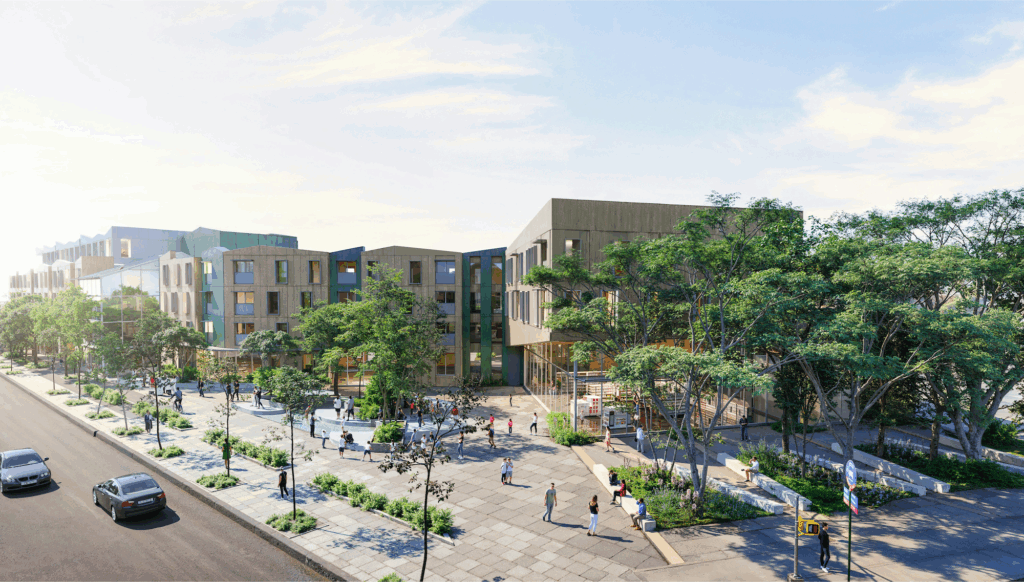
The New York Times reported on the repurposing of abandoned properties across the country to address housing shortages for low-income seniors. Known as adaptive reuse, apartment conversions of former hotels, hospitals, and other buildings are creating affordable housing units for older adults.
Reporter Heather Senison details the challenges of adaptive reuse for senior living including high labor costs, state codes, building requirements, and lack of accessiblity features. As an alternative to adaptive reuse, the article mentions Hillside Grove — VOA-GNY’s latest development on the site of an old Sanitation Department garage on Staten Island — as an example of building on a former commercial property from the ground up.
Hillside Grove will feature 232 units of affordable housing, with 90 reserved for older adults earning up to 60 percent of the area median income. The project, slated to be completed in 2030, will be a mixed-use development with a courtyard space for residents, a public plaza, and a grocery store.
Jeff Ginsburg, President and CEO of Volunteers of America-Greater New York, spoke with The New York Times about Hillside Grove.
“When you think about multiple uses, it gets more community support,” Ginsburg said. “And without community support, you can’t build housing.”
Read the article at The New York Times.
